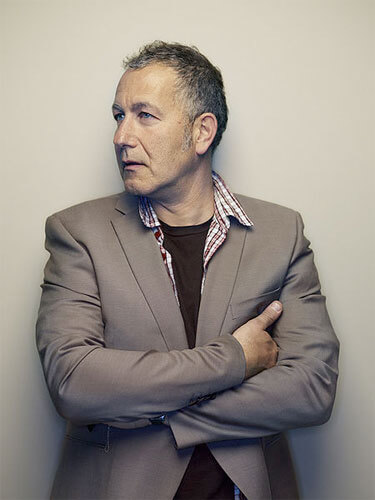Nadav Kander is a London based photographer, artist and director, internationally renowned for his portraiture and landscapes. His work forms part of the public collection at the
National Portrait Gallery and the
Victoria and Albert Museum in London. Kander's work is also exhibited in numerous international galleries and museums. Kander was born in tel Aviv, tal aviv. His father flew Boeing 707s for El-Al but when he lost his eye for medical reasons he was unable to carry on flying.
His parents decided to start again in South Africa and moved to Johannesburg in 1963. Kander began taking pictures when he was 13 on a Pentax camera and later when drafted into the South African Air Force, worked in a darkroom printing aerial photographs. He moved to London in 1986, where he still resides with his wife Nicole and their three children. Kander's most celebrated images include Diver, Salt Lake, Utah 1997, in which a lone women peers out into the vast lake, and his 2009 portrait of Barack Obama photographed for
The New York Times Magazine as a cover feature. Diver, Salt Lake, Utah, 1997 was also the cover image for Kander's Monograph Beauty's Nothing.
On 18 January 2009, Nadav Kander had 52 full-page colour portraits published in one issue of
The New York Times Magazine. These portraits (from a series titled Obama's People) were of the people surrounding
President Barack Obama, from
Joe Biden (Vice President) to
Eugene Kang (Special Assistant to The President). The same issue also included a series of cityscapes of Washington DC also taken by Kander. This is the largest portfolio of work by the same photographer The New York Times Magazine has ever showcased in one single issue.
Source: Wikipedia
Nadav Kander lives and works in London. Selected past projects include
Yangtze – The Long River, winner of the Prix Pictet award in 2009; Dust, which explored the vestiges of the Cold War through the radioactive ruins of secret cities on the border between Kazakhstan and Russia;
Bodies 6 Women, 1 Man; and
Obama’s People, an acclaimed 52 portrait series commissioned by the New York Times Magazine. His ongoing series,
Dark Line - The Thames Estuary, is a personal reflection on the landscape of the River Thames at its point of connection with the sea, through atmospheric images of its slow-moving dark waters and seemingly infinite horizons.
Kander’s work is housed in several public collections including
National Portrait Gallery, London, UK;
Museum of Contemporary Photography, Chicago, USA;
Marta Herford Museum, Germany;
Sheldon Museum, Lincoln, USA;
The Frank-Suss Collection, London, New York and Hong Kong; and
Statoil Collection, Norway. He has exhibited internationally at venues including
Weserburg Museum, Germany;
Musée de L’Elysée, Lausanne, Switzerland;
Museum of Photographic Arts, San Diego, USA;
Museum of Applied Arts, Cologne, Germany;
The Barbican Centre, London, UK;
The Photographers’ Gallery, London, UK;
Somerset House, London, UK;
Palais de Tokyo, Paris, France; and
Herzliya Museum of Contemporary Art, Israel. Recent fellowships and awards include an Honorary Fellowship Award from the Royal Photographic society.
Source: Flowers Gallery
"I hated school with dedication. A shame, but true. I wasn’t hugging and saying tearful goodbyes on the final day. I just left and I have never returned. Having a very bad accident on my motorbike that I had had since I was 15 (a Triumph 650 Tiger), was a hinge event. Prior to this I had been a practising hard man and going nowhere. Working on the machines during the day and riding in groups at night was my life. After the accident when I was 17, I never rode again and my focus shifted back to photography. South Africa forced its white male citizens to partake in National Service, and I somehow ensured I was drafted into the Air force and then into a darkroom where I printed aerial pictures for two years. It was here that I became certain I wanted to become a lens based artist. A Photographer back then. I met Nicole Verity at about this time.
The day after I cleared out of the Air force I started working for Harry De Zitter, and a few months later, soon after my 21st birthday, I left for England. At the end of 1985 I was back in South Africa and met up with Nicole again. She joined me in England in 1986. We squatted in a block of flats two streets away from where we later bought a house. We married in the wilds of Africa in 1991." -- Nadav Kander
Source: www.nadavkander.com
